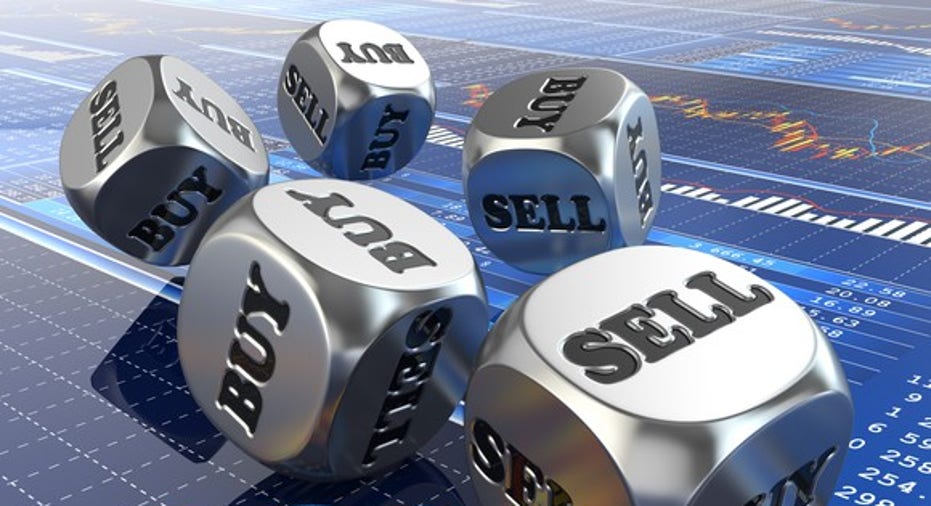3 Reasons Dow 20,000 Is Completely Overhyped

Image source: Getty Images.
For more than a week now, the iconic Dow Jones Industrial Average (DJINDICES: ^DJI) has been knocking on the door of the highly anticipated 20,000-point mark. Wall Street and investors are eager to see the index, composed of 30 U.S. multinationals, launch into new territory and firmly put the Great Recession in the rearview mirror. Furthermore, hitting 20,000 would probably signify that the U.S. economy is firmly standing on its own two feet once again.
Dow 20,000 is completely overhyped
However, Dow 20,000, should the mark even be reached in short order, isn't as big of a deal as Wall Street is making of it. While it's true that hitting 20,000 could create a very short-term euphoria for investors, the march to 20,000 appears to be completely overhyped, for three key reasons.
1. Dow 20,000 is totally arbitrary
Image source: Getty Images.
The first thing investors should recognize is that reaching a single point figure on the Dow is really just sort of silly and arbitrary. The Dow has hit 17 all-time highs just since the Nov. 8 election, yet no one from Wall Street was out lauding Dow 19,974 despite its being an all-time record on Dec. 21. Instead, Wall Street has chosen to be vexed by a completely arbitrary point figure that minimizes the incredible march higher by the Dow Jones Industrial Average. What we should be celebrating is the Dow's tripling in value in less than eight years, from 6,548 to nearly 20,000, and the resolve of the U.S. economy and American worker to rebound following the worst recession in 70 years.
2. Dow 20,000 is a fleeting data point
The second factor investors should be aware of is that Dow 20,000 is probably nothing more than a fleeting data point over your lifetime.
Image source: Getty Images.
Think about this for a moment: Baby boomers who began investing in their 30s have seen the Dow blow through 2,000, 3,000, 4,000, and so on, up to nearly 20,000 now since the mid-1980s. How much do you, as an investor, really remember these milestone events? My guess is you probably don't because you've been desensitized to the long-term success of the U.S. stock market.
This is the important point you need to really take in here: The U.S. economy and high-quality stock valuations tend to grow over time. That's what they do. Since 1950, there have been 35 stock market corrections of 10%, or more, when rounded to the nearest whole number. In every instance, be it weeks, months, or years later, a bull market rally has wiped out the correction. Given enough time, Dow 20,000 is going to be some distant memory and the Wall Street pros will be busy choosing new arbitrary data points, like Dow 30,000 or Dow 40,000, to cheer on.
3. Dow 20,000 has no bearing on your investment strategy or portfolio
Finally, investors really need to understand that Dow 20,000 has absolutely no bearing whatsoever on their investment strategy.
As noted, Dow 20,000 could create a very short-term euphoria from investors that could potentially push the market even higher. But just because the Dow hits 20,000, assuming it does so soon, it doesn't mean the companies in your portfolio are going to benefit one iota. Is Johnson & Johnsongoing to sell more drugs and medical devices because the Dow hit 20,000? No. Will Facebooksee a jump in ad spending because the Dow topped 20,000? Highly unlikely. The reason companies like Johnson & Johnson and Facebook will do well for investors is the success of their underlying business models. In other words, don't lose sight of the fact that the dog wags the tail and not the other way around.
Image source: Getty Images.
What should you do?
So what should you be doing as the Dow approaches 20,000? My suggestion would be to keep buying more stock as you've probably been doing since the recession.
Historically, the stock market gains an average of 7% per year, inclusive of dividend reinvestment. This means if you're regularly buying stock, regardless of where the Dow or other major indexes are, you should, over the long run, be averaged into high-quality companies at an attractive price. In addition, buying stock on a regular basis, be it weekly, monthly, or quarterly, removes the fear that you'll "miss" a rally. By erasing the impact of market-timing, you'll probably sleep better at night and generate more consistent long-term returns.
Forget about Dow 20,000 and stick to your game plan.
10 stocks we like better thanWal-MartWhen investing geniuses David and TomGardner have a stock tip, it can pay to listen. After all, the newsletter theyhave run for over a decade, the Motley Fool Stock Advisor, has tripled the market.*
David and Tomjust revealed what they believe are theten best stocksfor investors to buy right now... and Wal-Mart wasn't one of them! That's right -- theythink these 10 stocks are even better buys.
Click hereto learn about these picks!
*StockAdvisor returns as of December 12, 2016The author(s) may have a position in any stocks mentioned.
Sean Williamshas no material interest in any companies mentioned in this article. You can follow him on CAPS under the screen nameTMFUltraLong, and check him out on Twitter, where he goes by the handle@TMFUltraLong.
The Motley Fool owns shares of and recommends Facebook. It also recommends Johnson and Johnson. Try any of our Foolish newsletter services free for 30 days. We Fools may not all hold the same opinions, but we all believe that considering a diverse range of insights makes us better investors. The Motley Fool has a disclosure policy.